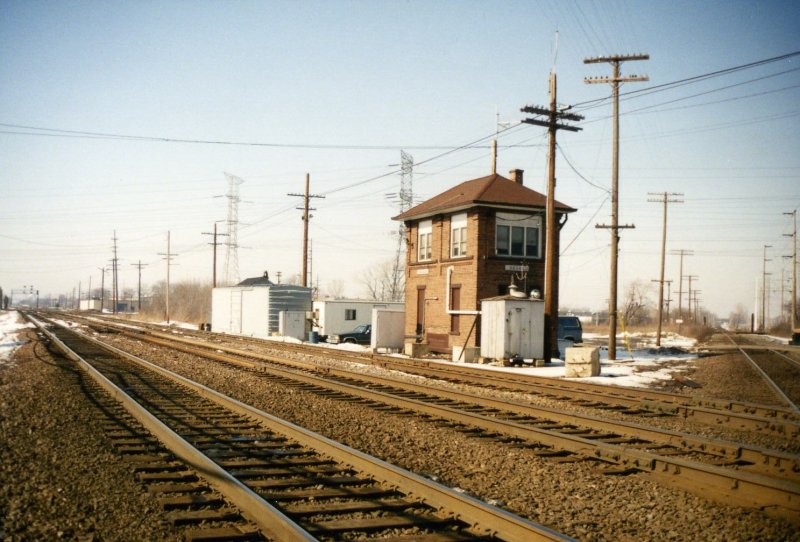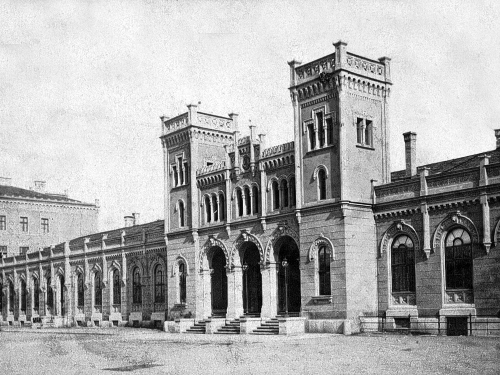|
Prien Am Chiemsee Station
Prien am Chiemsee station is the largest station of the Bavarian market town of Prien am Chiemsee. The station was opened in 1860 and is classified by Deutsche Bahn as a category 4 station. It has four platform tracks, one of which is a bay platform. It is served by about 85 Deutsche Bahn trains each day. The station is a separation station and is located on the Rosenheim–Salzburg, Chiemgau Railway (''Chiemgaubahn'') and the Chiemsee Railway (''Chiemseebahn''). Prien am Chiemsee also contains the terminus of the Chiemsee Railway to Prien-Stock, which is called the Prien (Stock) station. Location The station is located to the east of central Prien am Chiemsee. The station building faces toward the town centre and is located to the west of the railway. The address of the station is Bahnhofsplatz 2. Seestraße runs under the tracks to the north of the station. To the west Hochriesstraße runs from the Bahnhofsplatz (station forecourt), branching off Seestraße. East of the stati ... [...More Info...] [...Related Items...] OR: [Wikipedia] [Google] [Baidu] |
Deutsche Bahn
The (; abbreviated as DB or DB AG) is the national railway company of Germany. Headquartered in the Bahntower in Berlin, it is a joint-stock company ( AG). The Federal Republic of Germany is its single shareholder. describes itself as the second-largest transport company in the world, after the German postal and logistics company / DHL, and is the largest railway operator and infrastructure owner in Europe. Deutsche Bahn was the largest railway company in the world by revenue in 2015; in 2019, DB Passenger transport companies carried around 4.8 billion passengers, and DB logistics companies transported approximately 232 million tons of goods in rail freight transport. The group is divided into several companies, including '' DB Fernverkehr'' (long-distance passenger), '' DB Regio'' (local passenger services) and '' DB Cargo'' (rail freight). The Group subsidiary '' DB Netz'' also operates large parts of the German railway infrastructure, making it the largest rail netwo ... [...More Info...] [...Related Items...] OR: [Wikipedia] [Google] [Baidu] |
Relay Interlocking
In railway signalling, an interlocking is an arrangement of signal apparatus that prevents conflicting movements through an arrangement of tracks such as junctions or crossings. The signalling appliances and tracks are sometimes collectively referred to as an ''interlocking plant''. An interlocking is designed so that it is impossible to display a signal to proceed unless the route to be used is proven safe. Interlocking is a safety measure designed to prevent signals and points/switches from being changed in an improper sequence. For example interlocking would prevent a signal from being changed to indicate a diverging route, unless the corresponding points/switches had been changed first. In North America, the official railroad definition of interlocking is: "''An arrangement of signals and signal appliances so interconnected that their movements must succeed each other in proper sequence''". Configuration and use A minimal interlocking consists of signals, but usually ... [...More Info...] [...Related Items...] OR: [Wikipedia] [Google] [Baidu] |
Münster Hauptbahnhof
Münster Hauptbahnhof is the main railway station in the city of Münster in Germany. History The original Münster station was opened in 1848 by the Münster-Hamm Railway Company, when it opened by the Münster–Hamm railway to the then capital of the Prussian Province of Westphalia as a terminus of its branch line from Hamm, where it connected with Cologne-Minden trunk line. The railway was opened with a ceremonial run on 25 May 1848. The station building was erected in front of the Servatii-Tor (gate) between the modern streets of Wolbecker Straße and Albersloher Weg. About a month after the opening passenger services were added to the freight traffic on the line. However, the new means of transport was not particularly successful in the early years. On average 100 passengers per train were recorded. 1855-1880 In 1855, the Münster-Hamm Railway Company was taken over in 1855 by the Prussian government-funded Royal Westphalian Railway Company (''Königlich-Westfälische ... [...More Info...] [...Related Items...] OR: [Wikipedia] [Google] [Baidu] |
Saarbrücken Hauptbahnhof
Saarbrücken Hauptbahnhof or Saarbrücken Central Station also called ''Eurobahnhof Saarbrucken'', is the principal railway station in the German city of Saarbrücken and the largest station in the Saarland, a German state on the border with France. Around 10 million passengers use the station annually. The station is operated by DB Station&Service as a category 2 station, served by regional and long-distance trains. History Saarbrücken's central station was opened on 16 November 1852 as St Johann-Saarbrücken. The present city of Saarbrücken emerged later from the amalgamation of (old)Saarbrücken, St Johann, Malstatt and St. Arnual. The station was on the Saarbrücken railway, which ran from Bexbach via Neunkirchen (Saar) and Stieringen to the French Eastern Railway. The 56 metre long, 13.50 metre wide sandstone building was between the two tracks with access by an underpass, there being, unusually for that time, no track crossing. As the railway facilitie ... [...More Info...] [...Related Items...] OR: [Wikipedia] [Google] [Baidu] |
Linz Hauptbahnhof
Linz Hauptbahnhof or Linz Central Station is a railway station in Linz, the third largest city in Austria, and capital city of the federal state of Upper Austria. Opened in 1858, the station is the centrepiece of the Linz transport hub. It forms part of the Western Railway, and is also a terminus of the Pyhrn Railway, the Summerauer Railway, and the Linzer Lokalbahn (LILO). The station is owned by the Austrian Federal Railways (ÖBB); train services are operated by the ÖBB and the LILO. With 40,800 passengers daily in 2018/2019, it is the busiest station in Austria outside of Vienna, and the 7th-busiest overall. Linz Hauptbahnhof is situated in Bahnhofplatz, near the southern edge of the city centre. History The first Linz central station building was completed in 1858, to coincide with the arrival of the Empress Elisabeth Railway company's Western Railway from Vienna. The station was rebuilt from 1936 by the Nazis - being the closest city to Adolf Hitler's birthplace - i ... [...More Info...] [...Related Items...] OR: [Wikipedia] [Google] [Baidu] |
Graz Hauptbahnhof
Graz Hauptbahnhof, abbreviated Graz Hbf (German for ''Graz Main Station''; sometimes translated as Graz Central Station.), is the main railway station in Graz, the capital of the Austrian state of Styria. The station is located some west of the city centre, to which it is connected by the tram. The station serves as a major node on the Southern Railway, which links it to Vienna in the north, and Slovenia in the south. It is also the terminus of the Styrian Eastern Railway, which runs eastwards towards Hungary, and of the local Köflacherbahn to the west. In the future, the Koralm Railway will provide a direct link from Graz to Italy via Klagenfurt Klagenfurt am WörtherseeLandesgesetzblatt 2008 vom 16. Jänner 2008, Stück 1, Nr. 1: ''Gesetz vom 25. Oktober 2007, mit dem die Kärntner Landesverfassung und das Klagenfurter Stadtrecht 1998 geändert werden.'/ref> (; ; sl, Celovec), usually .... History The first Railway station was opened here in 1847 but due to a big i ... [...More Info...] [...Related Items...] OR: [Wikipedia] [Google] [Baidu] |
Frankfurt (Main) Hauptbahnhof
Frankfurt (Main) Hauptbahnhof, also called Frankfurt Central Station and Frankfurt Main Station, is the busiest railway station in the German state of Hesse. Because of its location near the middle of Germany and usage as a transport hub for long and short distance travelling, Deutsche Bahn refers to it as the most important station in Germany. Name The affix "Main" comes from the city's full name, ''Frankfurt am Main'' ("Frankfurt on the River Main") and is needed to distinguish it from Frankfurt (Oder) station on the River Oder in Brandenburg. In German, the name is often abbreviated as Frankfurt (Main) Hbf. History 19th century In the late 19th century, three stations connected Frankfurt to the west, north and south, the *''Taunus station'' for the Taunusbahn (opened 1839), connecting Frankfurt to Wiesbaden *''Main-Neckar-station'' for the Main-Neckar Railway to Darmstadt, Heidelberg and Mannheim (1848)) *''Main-Weser station'' for the Main–Weser Railway to ... [...More Info...] [...Related Items...] OR: [Wikipedia] [Google] [Baidu] |
Klagenfurt Hauptbahnhof
Klagenfurt Hauptbahnhof (German for ''Klagenfurt Main station''; occasionally translated as ''Klagenfurt Central Station'') is the main railway station in Klagenfurt, capital of the Austrian state of Carinthia. It is an important railway junction in southern Austria. History The station opened on 1 June 1863, when Klagenfurt received connection to the Southern Railway, one of the main train routes within the Austrian Empire, via the Carinthian branch line to Marburg, Styria (now part of the Drava Valley Railway). One year later, the line was extended to Villach Hauptbahnhof, which quickly superseded Klagenfurt as major Carinthian transportation hub with rail connections to the Brenner Railway at Franzensfeste and the Tarvisio–Udine railway (''Pontebbana'' line) at Tarvisio. In 1906, Klagenfurt received access to the Rosen Valley Railway running from Sankt Veit an der Glan via the Karawanks Tunnel to Assling (Jesenice) in Carniola (present-day Slovenia). The railway pr ... [...More Info...] [...Related Items...] OR: [Wikipedia] [Google] [Baidu] |
München Hauptbahnhof
München Hauptbahnhof or Munich Central Station is the main railway station in the city of Munich, Germany. It is one of the three stations with long-distance services in Munich, the others being Munich East station (''München Ost'') and Munich-Pasing station (''München-Pasing''). München Hauptbahnhof sees about 450,000 passengers a day, which puts it on par with other large stations in Germany, such as Hamburg Hauptbahnhof and Frankfurt (Main) Hauptbahnhof. It is classified by Deutsche Bahn as a category 1 station, one of 21 in Germany and two in Munich, the other being ''München Ost''. The mainline station is a terminal station with 32 platforms. The subterranean S-Bahn with 2 platforms and U-Bahn stations with 6 platforms are through stations. The first Munich station was built about to the west in 1839. A station at the current site was opened in 1849 and it has been rebuilt numerous times, including to replace the main station building, which was badly damaged during ... [...More Info...] [...Related Items...] OR: [Wikipedia] [Google] [Baidu] |
EuroCity In Germany
The German rail network provides connections to each of its neighbouring countries, many of which are under the EuroCity classification. EuroCity services are part of the Intercity network - many EC services represented a couple of train pairs on an IC route extended across the border, while other routes are served primarily by EuroCity services. EuroCity services are generally locomotive-hauled, using Intercity rolling stock, either from Deutsche Bahn or one of the other countries along the route. EuroCity services Below is a list of current EuroCity services in Germany. † Name no longer in use. Intercity services that cross borders A number of trains provide international connections, but are classed as Intercity rather than Eurocity. This may be because the routes were former InterRegio services, or they only travel a short distance over the border. ICE international The ICE network has grown since its introduction, and there are now services to Aarhus, Amsterdam ... [...More Info...] [...Related Items...] OR: [Wikipedia] [Google] [Baidu] |
Intercity (Deutsche Bahn)
Intercity is the second-highest train classification in Germany, after the ICE. Intercity services are loco-hauled express train services, usually over long-distances. There are Intercity routes throughout Germany, and routes generally operate with a two-hour frequency, with multiple routes giving a more frequent service on core routes. Intercity services are operated by the DB Fernverkehr sector of Deutsche Bahn. The ''Intercity'' name was introduced in Germany in 1971, replacing the old F-Zug category, and was the top category of train in Germany until the introduction of the ICEs in the early 1990s. With the proliferation of ICE services, the role of IC trains has diminished slightly, and they have taken on the character of many former InterRegio trains. Nonetheless, Intercity trains still offer a very high standard of speed and comfort – all services convey first class accommodation, and most include catering – usually a Bistro Cafe, but some services include a restau ... [...More Info...] [...Related Items...] OR: [Wikipedia] [Google] [Baidu] |










.jpg)